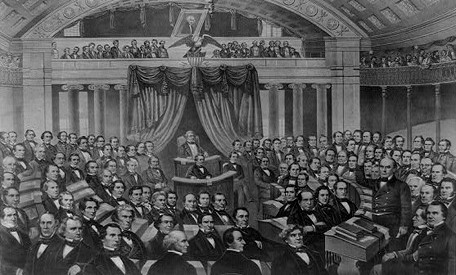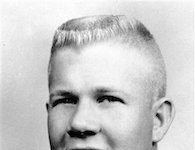On March 7, 1850, United States nationalist and statesman Daniel Webster delivered a three-hour speech on the issue of states’ rights to permit slavery. Five months later, Congress approved the Compromise of 1850 to preserve the Union.
Compromise Generates Criticism
Following the Mexican-American War and the annexation of Texas, Congress wondered whether new western territories would permit slavery. In 1849, California’s request to join the Union as a free state threatened to upset the balance between free and slave states in the Senate.
Kentucky Senator Henry Clay proposed a solution that called for admitting California as a free state, abolishing slave trade in the nation’s capital, and amending the Fugitive Slave Act.
South Carolina Senator John C. Calhoun challenged the compromise, but Senator Daniel Webster of Massachusetts stood behind Clay.
In a famous three-hour speech to the U.S. Senate, Webster claimed that slavery could not be eradicated where it already existed, but argued that it should not take root in new U.S. territories. However, he insisted that citizens abide by the Fugitive Slave Act and return escaped slaves to their Southern owners.
While Webster’s speech won him praise from moderates on both sides, he faced outrage from Northern abolitionists and lost the public support of many of his New England colleagues.
The Senate debated Clay’s proposal for seven months. The Compromise of 1850 was finally enacted in September, at which point it also established a territorial government in Utah and New Mexico and settled a boundary dispute between Texas and New Mexico.
It failed to provide a permanent solution to the issue of slavery, however, and disagreements between the North and South divided the Union in the following decades.
Sources in this Story
Background: Slavery in the Western States
The Northwest Ordinance of 1787 chartered a government for the Northwest Territory, and allowed the United States to expand westward toward the Pacific. Notably, it granted new states in the territory civil liberties and forbade slavery.
Congress settled a similar slavery rights conflict in 1820 by issuing the Missouri Compromise, another one of Henry Clay’s proposals. In an attempt to maintain the balance of slave and free states in the Senate, Congress allowed Missouri to enter the Union as a slave state and Maine to enter as a free state.
Also, hoping to prevent future arguments over slavery, it established the Missouri Compromise line, above which all states would be admitted as free and below which all states would be admitted as slave states.
Sources in this Story
- PBS: The Compromise of 1850 and the Fugitive Slave Act
- Our Documents: Compromise of 1850
- National Center: John C. Calhoun on the Clay Compromise Measures
- U.S. Senate: Classic Senate Speeches
- Library of Congress: Northwest Ordinance
- Ohio History Central: Missouri Compromise
- Encyclopedia Britannica: Daniel Webster Biography
Biography: Daniel Webster (1782–1852)
Born in 1782, Daniel Webster grew up in New Hampshire and attended Dartmouth College. He began his political career 1812 as a New Hampshire state congressman before becoming a U.S. representative and senator from Massachusetts. A distinguished lawyer, he also argued and won several notable Supreme Court cases in his career.
He was recognized in the Senate as one of America’s great orators and leading advocates of nationalism. After unsuccessful bids for the presidency, he was nominated a secretary of state, serving from 1841 to 1843 before returning to the Senate.
His endorsement of the Compromise of 1850 angered many of his constituents; knowing that he would likely be voted out of office, he accepted President Millard Fillmore’s offer to become secretary of state in July 1850. He made a final bid for the presidency in 1852, but could not secure the Whig Party’s nomination. He died later that year on October 24.
Reference: The Compromise of 1850 and Webster’s Speech
Our Documents contains a transcript of the original compromise, as proposed by Clay on January 29, 1850, as well as a handwritten copy of the draft.
Dartmouth College has transcribed Webster’s entire speech, which he delivered to the U.S. Senate over the course of three and a half hours.
This story was originally written by Erin Harris; it was updated January 16, 2017.











